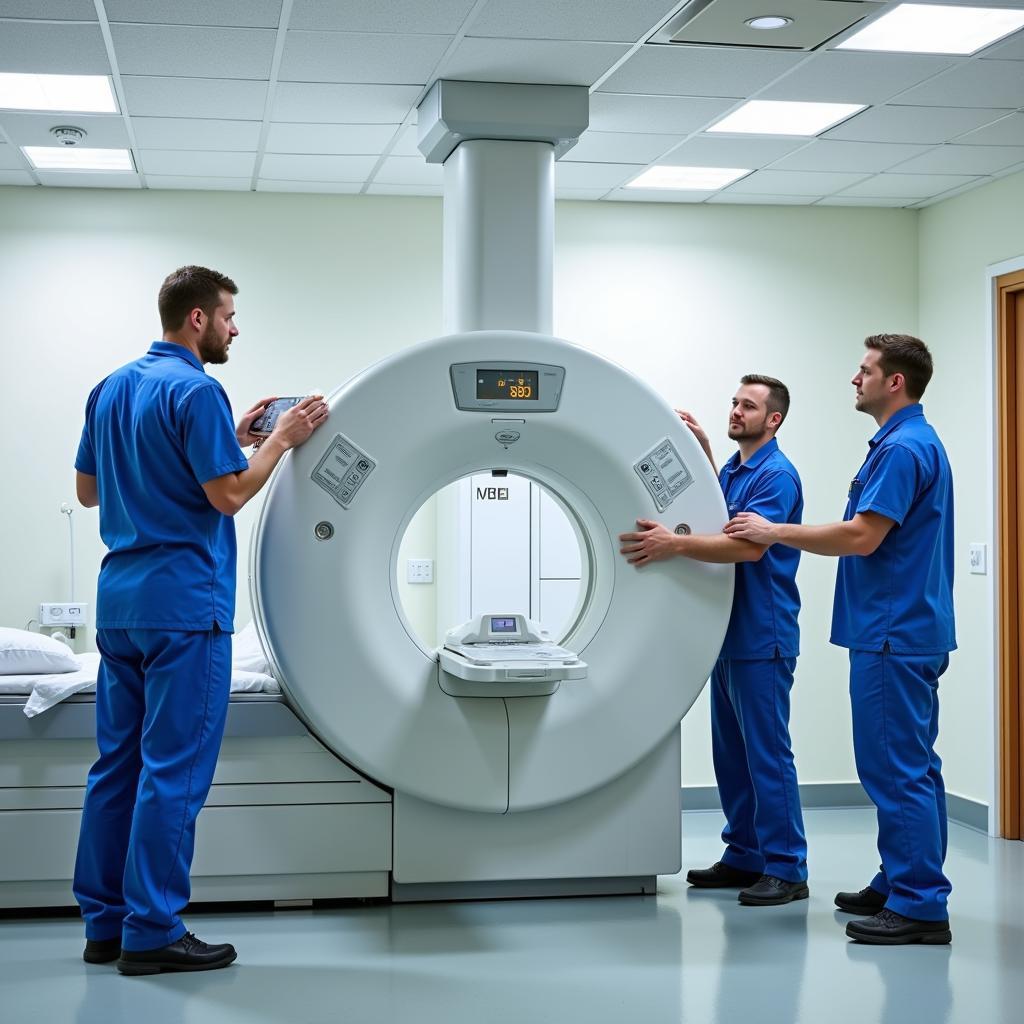Ensuring the smooth operation of a hospital hinges on the effective installation of its equipment. Hospital Equipment Installation is a complex process that demands meticulous planning, specialized expertise, and strict adherence to safety regulations. From sophisticated imaging machines to critical life support systems, the proper installation of this equipment is paramount to delivering exceptional patient care and maintaining a safe environment.
Why Precision in Hospital Equipment Installation Matters
The importance of accurate hospital equipment installation cannot be overstated. Improper installation can lead to a cascade of problems, compromising patient safety, operational efficiency, and ultimately, the hospital’s reputation.
Here’s why getting it right the first time is crucial:
- Patient Safety: Medical equipment, when not installed correctly, can pose serious risks to patients. Imagine a malfunctioning infusion pump or an inaccurate imaging device—the consequences can be life-threatening.
- Operational Efficiency: Equipment downtime due to faulty installation leads to delays in treatment, disrupts workflows, and increases operational costs. A well-executed installation ensures that equipment operates at peak performance, minimizing disruptions and maximizing efficiency.
- Compliance and Regulations: Hospitals are subject to stringent regulations and standards regarding equipment installation. Failure to comply can result in penalties, legal issues, and damage to the hospital’s standing.
 Hospital Equipment Installation Process
Hospital Equipment Installation Process
Navigating the Hospital Equipment Installation Process
A successful hospital equipment installation is a collaborative effort, involving various stakeholders and adhering to a structured process. Here’s a breakdown of the key steps:
- Planning and Design: This initial phase involves identifying equipment needs, determining space requirements, and planning for electrical, mechanical, and IT infrastructure.
- Procurement: Selecting and procuring equipment from reputable vendors is vital. Factors to consider include equipment functionality, compatibility with existing systems, warranty, and maintenance support.
- Delivery and Inspection: Upon delivery, all equipment must be thoroughly inspected for any damage or discrepancies.
- Installation: This stage involves the physical installation of the equipment, including assembly, calibration, and connection to utilities and networks.
- Testing and Commissioning: Rigorous testing is essential to ensure that the equipment is functioning correctly and meets all performance specifications.
- Training: Hospital staff must be thoroughly trained on the operation and maintenance of the new equipment to ensure safe and effective use.
- Documentation and Handover: Detailed documentation, including installation logs, user manuals, and maintenance schedules, should be compiled and handed over to the hospital.
Selecting the Right Partner for Hospital Equipment Installation
Choosing the right partner for your hospital equipment installation is just as critical as the installation process itself. Look for a company with:
- Proven Experience: A track record of successful installations in healthcare settings.
- Technical Expertise: A team of certified and experienced technicians with the necessary skills and knowledge to handle various types of medical equipment.
- Commitment to Safety: Strict adherence to safety protocols and industry best practices.
- Excellent Communication: Clear and consistent communication throughout the installation process.
- Comprehensive Support: Ongoing maintenance and support to ensure the long-term reliability of the equipment.
Frequently Asked Questions About Hospital Equipment Installation
Q: How long does a typical hospital equipment installation take?
A: The duration varies depending on the complexity of the equipment and the scope of the project. It can range from a few days for smaller devices to several weeks for complex systems.
Q: What qualifications should I look for in an installation technician?
A: Technicians should be certified and experienced in installing the specific type of equipment. They should also have a strong understanding of hospital safety protocols and regulations.
Q: What kind of warranty should I expect on installed equipment?
A: Warranties vary depending on the manufacturer and equipment type. It’s essential to clarify warranty terms with the vendor and installation provider.
Q: What is the importance of preventative maintenance for installed equipment?
A: Preventative maintenance is crucial for ensuring the longevity and reliability of medical equipment. It involves regular inspections, cleaning, and calibration to prevent malfunctions and extend the lifespan of the equipment.
Contact Us
For all your hospital equipment installation needs, contact San Jose Hospital at 02437655121 or email us at [email protected]. Our team of experts is available 24/7 to provide tailored solutions and support. You can also visit us at Số 298 Đ. Cầu Diễn, Minh Khai, Bắc Từ Liêm, Hà Nội, Việt Nam.